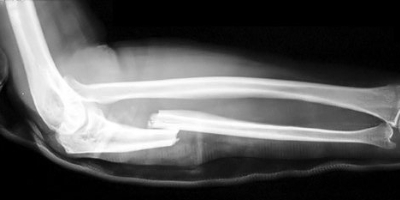
To say a forearm fracture is “no fun” would be underselling it. The bruising, swelling, grinding and lacerations that can come with an injury of this type can be debilitating if not properly treated.
And forearm fractures are actually far more common than you might expect, whether in children or adults. Under either frequent, consistent strains or during some sort of accident, your forearm is almost never safe.
But it is possible to understand the anatomy of an arm fracture. And that’s what today’s article, from leading orthopedic supplier, Toby Orthopaedics, is going to do.
Forearm Fractures in Adults and Children
Nearly half of all childhood fractures take the shape of forearm fractures, usually occurring at the distal end of the radius. These fractures can be classified by the specific bone area affected its stability, the cleanliness of the break, and the completion of the fracture itself.
Classifications include:
- Torus fractures: this fracture results from the top layer of bone compressing on one side after a harsh impact. These fractures are considered stable.
- Metaphyseal fracture: these fractures affect the upper and lower shafts of bones, but do not affect the growth plate.
- Greenstick fracture: fractures like this extend only through part of the bone, forcing it to bend in the opposite direction.
- Galeazzi fracture: usually a displaced fracture that disrupts the radius and wrist joint at the point where the radius and ulna meet.
- Monteggia fracture: fractures of this type occur when the radius dislocates, usually involving the ulna shaft and disrupting the elbow joint. They require urgent care.
- Growth plate fracture: as the name implies, fractures of this type occur across the growth plate.
In children, we find that these fractures differ from adults, largely because their bones are still growing. This means they have a higher level of cartilage and collagen in each bone, making them more pliable and actually less subject to a break because they bend with impact. These fractures can actually be so subtle that it’s difficult to detect on an x-ray, requiring a specialist to assess they’re even there.
The Adult Forearm Fracture
Fracture classifications apply to adults in the same way they do to children. The only real exception to this is with growth plate and greenstick fractures. As adult bones are less “pliable”, they have a higher tensile strength, and breaks tend to be more serious. We see this particularly often in adults suffering from osteoporosis, where an impact can cause significant damage.
When it comes to forearm fracture treatment, the best treatment is a quality repair job. This kind of injury is extremely painful but can be mitigated with expert repair work. At TOBY Orthopaedics is one of the leading suppliers of orthopedic components for use in flexor tendon, proximal humerus, and long bone fracture repairs. Visit or contact us today to find out more about our amazing product line!

